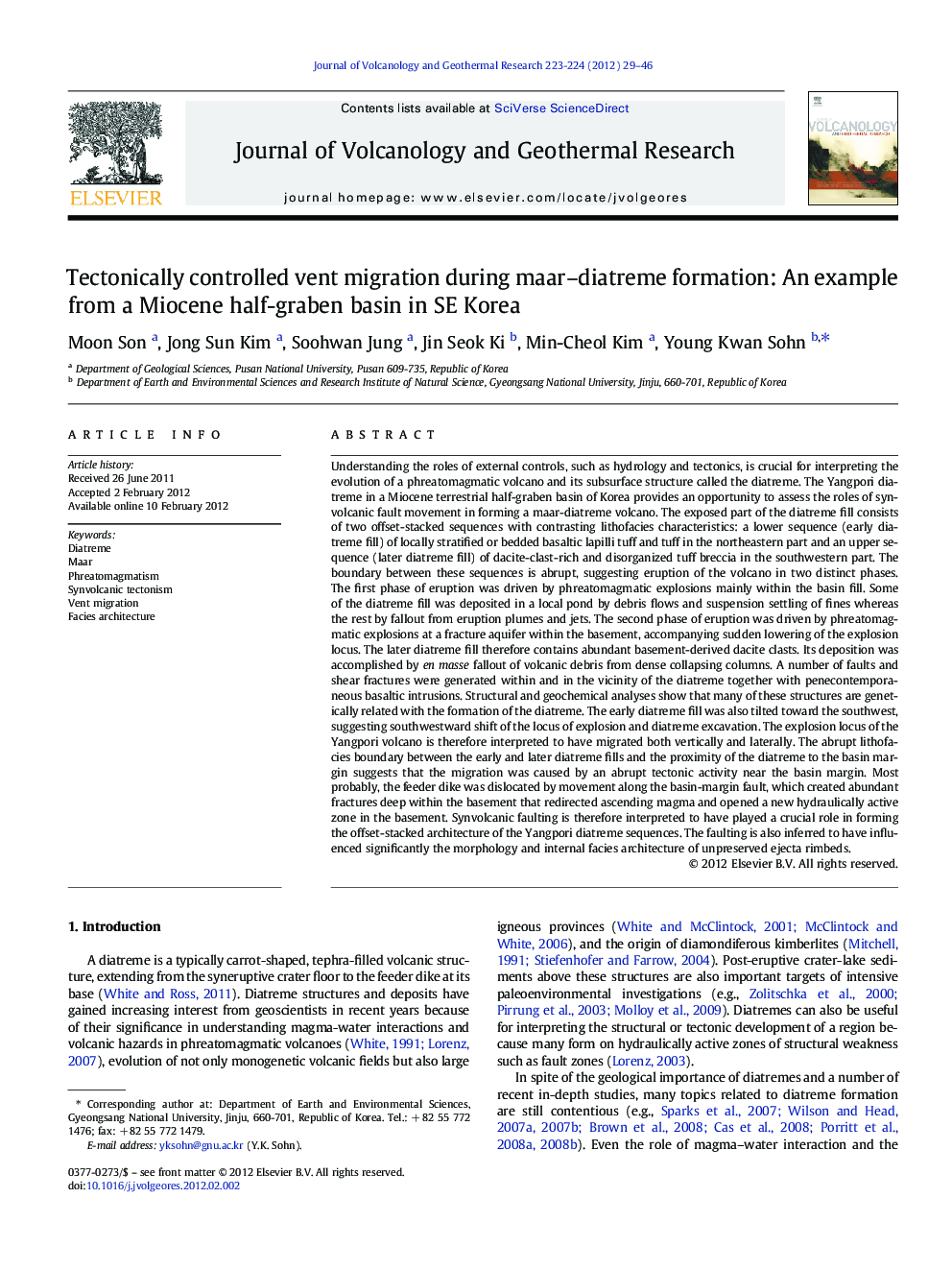| کد مقاله | کد نشریه | سال انتشار | مقاله انگلیسی | نسخه تمام متن |
|---|---|---|---|---|
| 4713792 | 1638385 | 2012 | 18 صفحه PDF | دانلود رایگان |

Understanding the roles of external controls, such as hydrology and tectonics, is crucial for interpreting the evolution of a phreatomagmatic volcano and its subsurface structure called the diatreme. The Yangpori diatreme in a Miocene terrestrial half-graben basin of Korea provides an opportunity to assess the roles of synvolcanic fault movement in forming a maar-diatreme volcano. The exposed part of the diatreme fill consists of two offset-stacked sequences with contrasting lithofacies characteristics: a lower sequence (early diatreme fill) of locally stratified or bedded basaltic lapilli tuff and tuff in the northeastern part and an upper sequence (later diatreme fill) of dacite-clast-rich and disorganized tuff breccia in the southwestern part. The boundary between these sequences is abrupt, suggesting eruption of the volcano in two distinct phases. The first phase of eruption was driven by phreatomagmatic explosions mainly within the basin fill. Some of the diatreme fill was deposited in a local pond by debris flows and suspension settling of fines whereas the rest by fallout from eruption plumes and jets. The second phase of eruption was driven by phreatomagmatic explosions at a fracture aquifer within the basement, accompanying sudden lowering of the explosion locus. The later diatreme fill therefore contains abundant basement-derived dacite clasts. Its deposition was accomplished by en masse fallout of volcanic debris from dense collapsing columns. A number of faults and shear fractures were generated within and in the vicinity of the diatreme together with penecontemporaneous basaltic intrusions. Structural and geochemical analyses show that many of these structures are genetically related with the formation of the diatreme. The early diatreme fill was also tilted toward the southwest, suggesting southwestward shift of the locus of explosion and diatreme excavation. The explosion locus of the Yangpori volcano is therefore interpreted to have migrated both vertically and laterally. The abrupt lithofacies boundary between the early and later diatreme fills and the proximity of the diatreme to the basin margin suggests that the migration was caused by an abrupt tectonic activity near the basin margin. Most probably, the feeder dike was dislocated by movement along the basin-margin fault, which created abundant fractures deep within the basement that redirected ascending magma and opened a new hydraulically active zone in the basement. Synvolcanic faulting is therefore interpreted to have played a crucial role in forming the offset-stacked architecture of the Yangpori diatreme sequences. The faulting is also inferred to have influenced significantly the morphology and internal facies architecture of unpreserved ejecta rimbeds.
► We describe a mafic diatreme in a Tertiary half-graben basin of Korea.
► The diatreme resulted from two distinct eruptive phases punctuated by vent migration.
► The vent migration was caused by syn-eruptive fault movement near the basin margin.
► Synvolcanic tectonic activity can play a crucial role in determining diatreme features.
Journal: Journal of Volcanology and Geothermal Research - Volumes 223–224, 15 April 2012, Pages 29–46